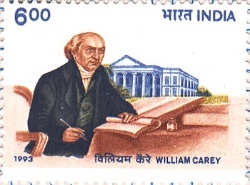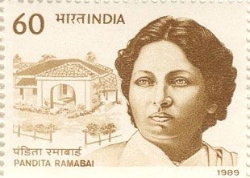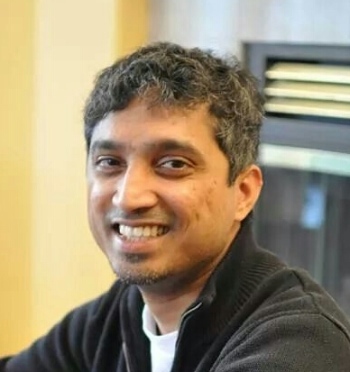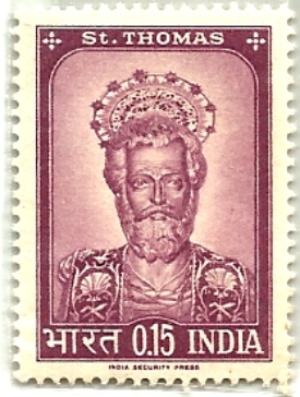In the spirit of Missions Fest – where we were reminded more than once that well over half of the world’s Christians now live outside of Europe and North America – we will look at the fascinating history of Christianity in India.
Apostle Thomas and Syrian Christians
Consider this: when the first book of the New Testament (1st Thessalonians) was written, the gospel had supposedly already reached India. The Thomas tradition maintains that the Apostle Thomas – one of the 12 disciples of Jesus – brought the gospel to India in 52 AD and was martyred in south India.
While this cannot be proved, the fact remains that the ‘Thomas Christians’ or Mar Thoma Church and Syriac Christians were in India prior to the birth of Islam in the 7th century.
There are many legends recorded in a later work called Acts of Thomas around how Thomas was selected by Jesus to go to India, even though Thomas was reluctant. He was then sold as a slave to build for a king named Gundaphar (Gondaphorus) in India. While many scholars have dismissed these stories, there have been discoveries of a king named Gondophares and his brother Gad who reigned over a kingdom within the huge Indo-Bactrian empire.
Whatever the historicity of Thomas’ adventures in India, it is not surprising that Christianity should have arrived so early in India. There was trade between India and the Roman world, with the movement of merchants and travellers to and fro.
According to the 4th century historian Eusebius, his teacher Pantaenus had determined to preach Christ to the Brahmins and philosophers and went as far as India. When he arrived, he found the gospel of Matthew had already reached there.
Robert Frykenberg notes in Christianity in India that there is “solid historical evidence of formal church life in India from the year 345 AD.” He quotes the voyage records of the 6th century merchant/monk from Alexandria, Cosmas Indicopleustes (Cosmas the India traveller):
The church, far from being destroyed, is multiplying, the whole world filled with the doctrine of Christ, and the gospel is being proclaimed in the whole world. This I have seen with my own eyes in many places, and have heard narrated by others. . . . Even in the Island of Taprobane [Sri Lanka] in Inner India, where also the Indian sea is, there is a church of Christians, clergy and believers . . .
The arrival of Protestant missionaries
 William Carey arrived in India in 1793. However, he was not the first Protestant missionary to India. The first were German Pietists from the University of Halle in Germany.
William Carey arrived in India in 1793. However, he was not the first Protestant missionary to India. The first were German Pietists from the University of Halle in Germany.
Bartholomäus Ziegenbalg and Heinrich Plütschau arrived in Tranquebar (now Tharangambadi), on the southeast coast of India on July 9, 1706. Ziegenbalg’s desire to learn the Tamil language led him to sit on the ground with schoolchildren and take part in their lessons. He mastered the language and in one year delivered his first sermon in Tamil and wrote his first tract. Within two years he had put together two Tamil dictionaries, one of 17,000 words and another of over 20,000 words, as well as a grammar.
These Protestant missionaries became go-betweens for transference of knowledge between the East and West. They also influenced some of the key figures of 18th century evangelicalism. Susannah Wesley, mother of John and Charles Wesley, was shaped by the memoirs of Ziegenbalg and Plütschau. Their mission biographies and accounts inspired others in Europe.
 By the time William Carey came to India, the foundations for the new movement in missions had already been laid by those who arrived before him, so it is important to acknowledge their influence on him and the modern missionary movement.
By the time William Carey came to India, the foundations for the new movement in missions had already been laid by those who arrived before him, so it is important to acknowledge their influence on him and the modern missionary movement.
Carey faced opposition from the church, and from the East India Company, as the colonial powers had no interest in the preaching of the gospel. He even faced opposition from his family, including his wife, who later died in India. And yet became a contributor to modern India – It was under his influence and efforts that the practice of widow burning (sati) was banned in India.
Carey came to India in 1793 was later joined by two other missionaries, Joshua Marshman and William Ward, and they became known as the Serampore Trio (Serampore being the Danish colony they had to move to in order to continue their missionary activities without opposition). Carey gave 40 years to serving in India and contributed to India through his Bible translations, education and social reforms.
His quote is still remembered: “Expect great things from God; attempt great things for God.”
Indian leaders at the turn of the 20th century
 Sadhu Sundar Singh (1889 – 1929). Sadhu means a sage or holy man. Sundar Singh was born into a devout Sikh family and was trained by his mother into the Hindu as well as Sikh religion.
Sadhu Sundar Singh (1889 – 1929). Sadhu means a sage or holy man. Sundar Singh was born into a devout Sikh family and was trained by his mother into the Hindu as well as Sikh religion.
Sundar Singh came into contact with Christianity though mission schooling but rejected it. He even burnt a copy of the Bible and was rebuked by his father for that. He began to search for truth as a teenager, but found no peace in spite of studying the Gita, the Koran and practicing yoga. Not finding satisfaction in these, he decided to commit suicide by lying down on the railway line early one morning.
However, that morning, he had a vision of Jesus and he gained the peace he sought. He became a Christian and after his baptism donned the robe of a sage. Like St. Francis of Assisi, he became a Christian ascetic, wandering around and preaching the gospel.
His wanderings took him into Tibet and there are many stories of his mystical experiences, supernatural deliverances and encounters. He visited Britain, America and Australia in 1920, creating a deep impression on many who heard him.
He was always fascinated by Tibet, which was closed to missionaries. In 1929, at the age of just 39, but in failing health, he set out on a journey to Tibet from which he never returned. He is said to have brought the “Spirit of Christ into the mould of the Hindu religious ideal of renunciation and service” (P. Chenchiah).
 Pandita Ramabai (1858 – 1922). Pandita Ramabai was born in 1858 into a high caste, highly educated Hindu Brahmin family.
Pandita Ramabai (1858 – 1922). Pandita Ramabai was born in 1858 into a high caste, highly educated Hindu Brahmin family.
By the age of 15 each member of her family was able to take turns giving public recitations or readings from classical Indian works. By the age of 20 she baffled learned pandits by her brilliance, able to recite Hindu scriptures and poets from memory; she was given the title Pandita (scholar) and even called Saraswati – the Hindu goddess of learning. She married young, but her husband died after 19 months of marriage and she was widowed with a young child by the age of 22.
Later, through missionary friends, she began to study Christianity and also began to fight for the rights of women by opposing child marriage, denial of literacy and oppression of high caste child widows. For this, she was opposed by men among the Hindu community. In 1886 she founded a home for destitute orphans and ill-treated child widows – and in 1898 Mukti Mission, which still continues and has sheltered thousands of girls in this past century.
Pandita Ramabai’s conversion to Christianity was out of her own choice. She was a pioneer educationalist in India and probably the first woman in the world to translate the entire Bible into her mother tongue from the Hebrew and Greek.
She recognized the spiritual need of India, even though she lived through one of the worst famines during the 20th century. She said: “We are living in a strange time. There is a famine, not of food and water, but of the word of God. God’s word has been robbed of its supreme authority . . . Our Indian churches have become cold and lukewarm.”
After the revivals in Wales in 1904, Ramabai was led to start a special prayer circle in 1905. about 70 people met every morning and prayed for India and an outpouring of the Holy Spirit. Six months from that time something remarkable happened, and has been documented.
On June 29, 1905 at 3.30 am the Holy Spirit was poured out on one of these volunteers. The girl sleeping next to her woke up and saw the girl enveloped in fire. She ran to get a pail of water to dash it on her but soon realized that it was not real fire. In less than an hour the other young women gathered around and began to weep and pray and confess their sins.
On June 30, 1905 revival began in India. Teams of girls planted churches all over; during the next year God poured out his Spirit on different parts of India.
In 1906 revival also came to the Azusa Street in Los Angeles, following reports of what had happened in Wales and India. A visiting Presbyterian leader from Korea reported that he had seen God’s blessing and revival come to India after the Welsh revival of 1904-5. Many people in Pyongyang (capital of what is now North Korea) decided to seek God. In 1907 Korea experience a great revival as God poured out his Spirit on that nation.
During the Decade of Revival in India, 1901 – 1910, Christianity grew in India by 69.9 percent. The number of Indian evangelists doubled from 1901 – 1905 and doubled again from 1906 – 1910. Does this sound similar to what happened in the Book of Acts as the church, empowered by the Holy Spirit grew in strength and influence? God is still doing that.
The reason I love studying church and mission history is because we get to see God’s hand working in history. After all, it is his-story! In a world and society that is so hostile towards the disciples of Christ, we need to be reminded that the God who worked in history continues to work in our world, in our city, in our family and in our personal lives.
Sources:
Boyd, Robin H. S. An Introduction to Indian Christian Theology. Madras: Christian Literature Society, 1969.
Chenchiah. P. “Present Tendencies in Indian Religions,” in An Approach to India, ed. Milton Stauffer. New York: Missionary Education Movement of the United States and Canada. 1927.
Duewel, Wesley L. Revival Fire. Grand Rapids, Mich: Zondervan Trade Books, 1995.
Dyer, Helen S. Pandita Ramabai: A Great Life in Indian Missions. London: Pickering & Inglis, 1930.
Frykenberg, Robert Eric. Christianity in India: From Beginnings to the Present. Oxford: Oxford University Press, 2008.
Neill, Stephen. A History of Christian Missions. 2nd ed. London ; New York: Penguin Books, 1990.



Thank you Sandeep.
Indian Christian Theology has a lot to contribute especially in the realm of inter-religious dialogue and deep spiritual harmony with nature. Our “Cosmotheandric” vision can help enrich world Christianity as we keep struggling for the rights of the weakest of the weak in our society. I do hope the Church in India opens herself to sexual minorities and offers their broken lives in the altar of love as well.
Good article. The Indian Church and the Chinese Church are becoming two of the most influential. Sadly there is a lot of denominational representation in India. But there are many new house church movements that are under the Lord’s headship and work 100 percent.
Amazing article . . . praise God!
A great article by Sandeep. As director of the BC Christian Ashram retreat, founded by the missionary to India Dr. E Stanley Jones, I am fascinated by the mission work in India over the years. http://www.christianashram.org/ Dr. E Stanley Jones wrote the groundbreaking book in 1930 Christ of the Indian Road. During Jones’ lifetime, his 28 books were the most widely read spiritual books in the world.
I also loved the reference in Sandeep’s article to William Carey about whom I wrote an article: https://www.academia.edu/7094500/William_Carey_Educational_Pioneer
Thanks Ed – E. Stanley Jones’ Christ of the Indian Road is an important book. He wanted the Indian church to be a “voice” and not just an “echo.” That dream is yet to be fulfilled. Blessings.